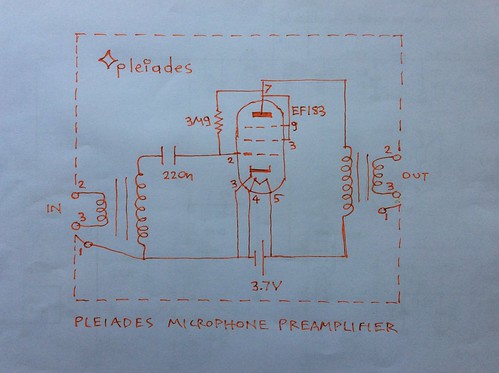L=85mH
R=140Ω
(Later addition. The idea of L in series with R and also be seen on the academy award winning Electro-Voice 642 as well as on the AKG D1000E).
This is continued from:
http://euroelectron.blogspot.gr/2018/05/primary-transformer-inductance-for.html
This is on further experiments in order to get as much flat frequency response from producer's brain to listener's brain from the amazing Sennheiser MD211 N, one of the best microphones ever made. It even is a mic with no sibilant problem while having amazing treble detail no mater how close it is used.
Signal path, setup:
Male voice singing bass register the song (Stalia Stalia - Marinela) - Sennheiser MD211 N at 2-4in from mouth - inductor in series with a 300Ω potentiometer - Pleiades V6 head amp with input transformer the Altec 4722 - Sony TC-D5 Pro at XLR mic in - Sennheiser HD580 headphones
Paying attention to how important phase is, (in this case from positive presure increase to the mic to positive presure increase from headphones) a phase reversal XLR adaptor is used before entering the Sony TC-D5 Pro in all these experiments as this particular example of TC-D5 phase reverses.
Before connecting the LR filter the following listening tests were done.
The MD211 connected to Pleiades V6 with the Sowter 260mH input transformer. Great sound but there is a sense that it can be even more natural. HF and mid is great but there is some sense of low mid missing even if there might be a slight overall bass heaviness.
The current Pleiades reference Grampian DP4/L (25Ω) omnidirectional mic connected to Pleiades V6 with the usual 140mH (primary inductance) transformer. Amazing sound. Full body and natural. Everything is there, bass, mid, HF detail. Smooth. Clear as life.
Back to the first test. Beautiful but still this sense of something missing or can be improved.
Next test is the MD211 connected to Pleiades V6 but this time with the Altec 4722 mic input transformer. Big sound, but too much bass heavy. Apart masking lack of mid or treble. This is because the primary input inductance is 3H. The following tests are done while keeping the Altec 4722 and inserting Pleiades wave filters in parallel with the mic output (or transformer input) in order to reduce the brain perceived bass heaviness.[Lowe and Morgan]
A Pleiades XLR barrel inductor filter of 330mH was connected. This gives a -3db point at about 100Hz when a mic of 200Ω is used. (The impedance of the MD211 used measures 260Ω). Sound is much better much more clear but still somewhat bass heavy.
Another Pleiades filter of 330mH is connected after the previous filter. Resultant shunt inductance is now half or 160mH and cutoff is 200Hz. Clear sound but bass light. The decision or idea comes to insert a series resistor and a filter of higher cutoff.
So a 300Ω log potentiometer is connected using 2 of its terminals to a male XLR through cable crocodile clips so that the inductor that will be inserted in the XLR socket will be in series with R. The resultant was connected to the mic cable 2,3 ie live,return. Following the fashion of the AKG D1000E previous Pleiades experiments an inductor of 85mH was inserted. This theoretically gives about a 385Hz turnover point with a 200Ω output impedance mic. The variable resistor was left to a random position, aproximately 140Ω. The sound is brilliant. Full body or big sound with no bass heaviness, great mid and treble. Very clear and natural.
The measured value of the potentiometer is 140Ω or 145Ω.
The value of this resistance in series adjusts the slope of the low cut curve.
It was easily decided not even to turn the potentiometer for the time being.
This is the schematic of the Pleiades V6 low noise head amp used. C is 22nF, Rag anode to grid biasing resistor is 6MΩ (Pleiades bias) for freeing the electrons. There is an aproximately 12Ω series to heater supply resistor (not shown) such that the anode current is reduced to typically 60μA.

References:
Flat frequency response from producer's brain to listener's brain, Sound Picture Recording and Reproducing Characteristics - D. P. Lowe and K. F. Morgan - J.S.M.P.E.
The song used for the test, sung with male voice:
Stalia Stalia - Marinela
https://m.youtube.com/watch?v=Ks25u2UKD4E#fauxfullscreen
Pleiades V6 schematic or description - euroelectron
Electro-Voice 642
http://www.coutant.org/data/642.pdf
No comments:
Post a Comment